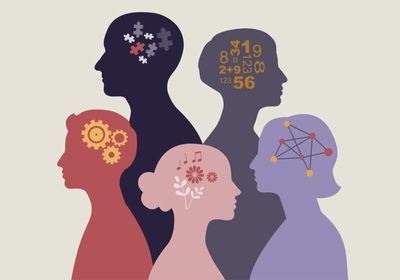ABOVE: Researchers connect neurodivergent genetics to developmental cell fates using brain organoid models, CRISPR, and single-cell RNA sequencing. ©i Stock, MarLei
No two brains are the same. This is well known in life and science, but why brains develop divergently in autism spectrum disorder (ASD) is a mystery that persists in neurobiology research. Many genetic studies indicate that ASD likely arises early during fetal stages of development.1 However, researchers are still trying to connect the genetics to the cellular trajectories that diverge during ASD development.
We are taking a list of genes that are implicated in autism, and we want to know for each and every one of them, how does it affect the lineage of the human brain?
-Jürgen Knoblich, Institute of Molecular Biotechnology in Vienna
Now, in work published in Nature, researchers created an organoid-specific gene disruption system named CRISPR-human organoids-single-cell RNA sequencing (CHOOSE) to examine 36 transcriptional regulator genes with confident connections to ASD.2,3 By perturbing genes through CRISPR editing and examining organoid development, the researchers linked known genetic risk factors to developmental pathways that remain to be explored in ASD.
“There are decades of medical literature that make lists of genes that cause brain disorders,” said neuroscientist and geneticist Jürgen Knoblich who investigates brain development at the Institute of Molecular Biotechnology in Vienna and is an author of the study. “We are taking a list of genes that are implicated in autism, and we want to know for each and every one of them, how does it affect the lineage of the human brain?”
To establish an organoid system for CRISPR perturbation, the researchers pooled a library of guide RNAs targeting ASD genes in stem cells and monitored how those stem cells developed into minibrains after gene editing. Knoblich and his team performed multiomic analyses to compare CRISPR-active and CRISPR-inactive organoids, determining how each gene influenced cell fate. “Not every gene gives a phenotype in every type of analysis, but every gene gives a phenotype in at least one of them,” Knoblich said. “We can assign a loss-of-function phenotype to every one of these genes, and it is this completeness that is the value.”
The researchers showed that disrupting ASD genes with CRISPR changed several cell fate pathways in telencephalic organoids, which model cell type lineages found in the largest portion of the developing brain. They identified which progenitor cells and neurons were among the cell types most vulnerable to gene perturbation. The researchers also homed in on a potential role for oligodendrocyte cell lineages in neurodevelopment disorders mediated by the ARID1B gene.
Mutations in ARID1B can cause intellectual disability and ASD. The researchers modeled patient-specific developmental changes by growing organoids with induced pluripotent stem cells derived from two separate patients with ARID1B mutations. Similar to ARID1B-perturbed cells in the CHOOSE screen, patient-derived organoids showed increased oligodendrocyte lineages. When the researchers looked at intrauterine super-resolution MRI data for one of the patients, they noted that a region of the brain called the ganglionic eminence was enlarged, consistent with ARID1B disruption affecting cell fate.
“Doing a genetic screen, picking out an interesting gene, going back and recruiting patients who have mutations, verifying what you found in the screen, and then even making a prediction on how the brain should look like and verifying that with prenatal MRI, I think this goes very, very far in the whole analysis,” Knoblich said. “I am quite proud that this is now possible in a human brain.”
Knoblich’s work is among a collection of recent studies using CRISPR, 3D cultures, and single-cell analyses to elucidate the developmental gene regulatory network in the brain, including Nature publications from separate teams led by neurodevelopmental biologists Paola Arlotta from Harvard University and Sergiu Pașca from Stanford University, who also investigated ASD risk genes.4,5 These studies are crucial to placing genetic risk within biological context. “The biological function and understanding for these autism-related risk genes are not really well understood and this is one of the studies aiming at understanding how these risk genes function,” said Guo-Li Ming, a neurobiologist from the University of Pennsylvania who was not involved in this work.
By building cerebral organoids and mapping individual cell fates, Knoblich and his research team connected well-established genetics to less comprehensively considered developmental pathways. Their findings also steer the field down untrodden research roads, such as investigating the oligodendrocyte lineage favored by ARID1B disruption. “That is an interesting aspect that I think has not been shown by earlier studies,” Ming said. “This is something that, I think, points to a new direction.”
- Zhou Y, et al. Genetics of human brain development. Nat Rev Genet. 2024;25(1):26-45.
- Li C, et al. Single-cell brain organoid screening identifies developmental defects in autism. Nature. 2023;621(7978):373-80.
- Dixit A, et al. Perturb-Seq: Dissecting molecular circuits with scalable single-cell RNA profiling of pooled genetic screens. Cell. 2016;167(7):1853-1866.e17.
- Paulsen B, et al. Autism genes converge on asynchronous development of shared neuron classes. Nature. 2022;602(7896):268-73.
- Meng X, et al. Assembloid CRISPR screens reveal impact of disease genes in human neurodevelopment. Nature. 2023;622(7982):359-66.




